#The Ballantynes
Explore tagged Tumblr posts
Text
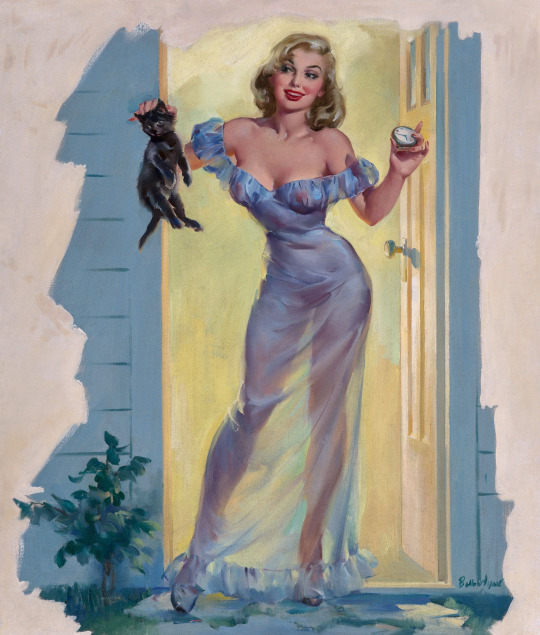
Joyce Ballantyne - "Me and My Shadow" - May 1955 Bowmans Automotive Advertising Calendar Illustration - Shaw-Barton Calendar Co. - Original art sold by Heritage Art Gallery 2020
#joyce ballantyne#may#1955#bowmans automotive#advertising#calendar#illustration#shaw barton calendar company#pin up#heritage art gallery#american pin up
675 notes
·
View notes
Text
Double Indemnity, Spellbound and how a retroactive plot twist kicked the communities ass (which also has some VERY interesting implications for Aventio)
I had a very enlightening conversation on TikTok about the nature of these two romance/thrillers, and while unfortunately, I have no idea how to watch them, the plot synopses I’ve seen and analysis other people have made have caused me to come to this conclusion/interpretation of these references:
On the first viewing of the Double Indemnity questline, the reference to the DI movie is meant to be played straight, with Aventurine and Ratio being just as doomed to fail as they are in the movie, and their relationship as equally as toxic and fake.
On second viewing, it’s the complete opposite, and the track (and other movie reference) you receive at the end, Spellbound, proves it.
Let’s start with Double Indemnity.
Also disclaimer I’m gonna be over simplifying the plot/themes of these movies because a) both are singular references, DI is only referenced in the name of the quest itself and Spellbound is only referenced in a track you receive once you complete DI, and references this small probably aren’t meant to be anything more than a fun Easter egg for those who notice it b) this is hoyoverse they aren’t clever enough for that anyways c) the nature of references isn’t going to be having everything be the exact same anyways, so I’m just going to go with the overall interpretation of DI + Spellbound/their impact, picking the stuff which aligns with the actual plot of the DI quest, I don’t care what happens in one frame at 30:01.56 minutes in and neither do the writers
Anyways, how does the Double Indemnity reference on the first viewing seem?
On our first play through of the Double Indemnity quest, we are made to believe that Dr. Ratio and Aventurine do not trust each other, but they are begrudgingly working together for the sake of stealing Penacony for the IPC. Then, Aventurine makes it seem as if he wishes to use the singer Robin’s- also the sister of Sunday, the head of the Oak Family and the one they are negotiating with- death as a means to pressure Sunday into forking over some of the Family’s secrets, which Aventurine will then use against him in future negotiations.
With this setup, the Double Indemnity reference is a solemn warning- Aventurine and Ratio will fail.
You see, in the movie, Phyllis Dietrechson intends to kill her husband in order to earn the money from the Double Indemnity clause (which is a real legal thing btw!), roping in one Walter Neff when he falls for her. However, their relationship isn’t stable and in the end, Walter betrays Phyllis, ratting her out to the investigator Keyes, ultimately meaning they don’t earn the DI clause, also killing Phyllis in the process.
Hopefully you can already see where I’m going with this, but it’s time to draw some fun parallels.
Sunday is Keyes, Ratio is Walter, Aventurine is Phyliss and Robin is Phyliss’s husband.
Although Aventurine a) isn’t married to Robin and b) he didn’t actually kill her, he is the one who witnessed her “death” and in the first viewing of the Double Indemnity quest, we are made to believe he intends to profit off of it, although this time the payout isn’t money: it’s Penacony.
To do this, he enlists the help of Ratio- albeit not seducing him, but still convincing him to help nonetheless- and together they go to meet Sunday for negotiations.
However, Ratio “betrayed” Aventurine, ratting him out to Sunday behind his back and informing him of his plan, which mirrors how Walter confesses to Keyes. This results in Aventurine being sentenced to death, much like how Phyllis dies by Walter’s hand, Aventurine seems like he will die by Ratio’s, calling him a wretch before slinking off.
And there you go, their partnership is as doomed as the one in the movie, failing because their trust + love didn’t hold up till the end, a devious foreshadowing.
At least, that’s how it seems on the first playthrough.
Because Aventurine and Ratio’s plan SUCCEEDS.
And on the second viewing, knowing that the betrayal is fake, you realize they succeed because they do the one thing the people in DI (and I’ll get to Spellbound) DONT do- they actually TRUST each other.
Ratio and Aventurine’s plot is a success. And it’s because they deliberately made it seem like they were doing a Double Indemnity plot. Like they were going to make the same mistakes as the characters in the movie. Sunday falls for the false appearance hook, line and sinker, and that’s his downfall.
They win because they TRUST each other, you can even say because they actually LOVE each other, unlike the characters in the movie, where it’s more list than anything else. Walter and Phyllis don’t make it together to the end but Ratio and Aventurine DO, and they get to continue on with their lives because of it. The reference to Double Indemnity in this quest is genius because it works both before and after you learn the retroactive twist of Penacony. It makes you believe Aventurine + Ratio are doomed to fail, and it makes you realize they were always going to succeed, expertly dawning the false appearances Sunday expects from them, becoming literal actors playing out the roles of two people who will fall short due to their selfishness. Sunday believes he’s seen this film before which is why he BUYS IT, and god it’s just beautiful looking back on it. He thinks he’s Keyes about to uncover a dastardly plot to profit off his sisters death, and in turn he paints Ratio and Aventurine with the identities of those he believes would do such a thing, which they do their best to play into. Ugh it’s amazing.
And now, for Spellbound.

You receive this track after completing Double Indemnity, containing the description above.
Now, this is a reference to Spellbound, another one of Hitchcock’s films.
The main characters in this one are Dr. Anthony Edwards, a man suffering from amnesia, and Dr. Constance Peterson, a psychoanalyst who he was meant to replace, who discovers a dark secret about Edward’s while they fall for one another; he’s an imposter. He believes he killed the real Dr. Edward’s, but she thinks he’s just suffering from a guilt complex. Fake Edward’s goes missing, and the real Edward’s assistant arrived and informs them that he’s missing. She finds Fake Edward again, living under the pseudonym John Brown, and although he tries to leave, she convinces him to stay, telling him that with the help of her mentor, psychoanalysis can help recover his lost memories.
Through an incredibly complicated psychoanalysis of dream, Constance begins to uncover the truth- learning the person who believes himself to be Dr. Edward’s (and is using the pseudonym John Brown) is actually a man named John Ballantyne. Ballantyne accidentally caused the death of his younger brother in the past, resulting in his deep guilt, as well as recalling the location where the real Edwards died- skiing off a cliff to his death. With his memories, they find the body, but it has a bullet wound, so Ballantyne is taken into custody.
However, her boss, Dr. Murchison lets it slip that he actually used to know (and didn’t like) Dr. Edwards, and through another complicated sequence gets him to confess his guilt and ultimately kill himself, which frees Ballantyne, ending the movie with the two going on a honeymoon.
So, what does this mean in the context of the quest line?
Well, let’s say Ballantyne and Constance are representative of Ratio and Aventurine respectively.
“Every psychoanalyst must first have someone else diagnose them.”
If we read Aventurine as the psychoanalyst (Constance) and Ratio as the diagnoser/doctor (Ballantyne), it reveals an interesting interpretation.
That being that they knew the truth from the start/ they had already succeeded.
Or in other words, unlike in Double Indemnity, in Spellbound, they actually succeed.
In the film, Constance is the one doing the diagnosing, the one trying to figure out the truth, and you can see that in Aventurine pretending he’s trying to find out the truth behind Robin’s death. However, in the DI quest, it’s the opposite. Ratio’s as Ballantyne is the one doing the diagnosing for the psychoanalysist, Constance, or rather, Aventurine.
To diagnose someone, you must be very familiar with them, or at the very least the ailment plaguing them, and Ratio he knows Aventurine through and through at the start, and what plagues him (his own sense of meaninglessness) unlike the protagonists in Spellbound who despite falling for one another quickly, don’t begin being intimately familiar with one another.
In this way, they have already succeeded. Aventurine and Ratio already know one another, and while they might not know the reason behind Robin’s death, that was never what they were searching for in the beginning, meaning they effectively can skip through all the drama (aka the ups and downs of Spellbound, finding out the truth behind Robin’s/Edwards’ death), and reach their happy ending- a honeymoon; or in DI’s case, Aventurine attaining his cornerstone, and fulfilling his end of the plan.
Interestingly, Aventurine slots into the role of Ballantyne and Ratio as Constance equally well, with the phone call Constance makes to save Ballantyne being reminiscent of the note Ratio makes to save Aventurine, as well as Aventurine being the replacement, or in the sense, the one to find the truth about Robin.
Personally, I think Aventurine and Ratio are reminiscent of both the main leads in Spellbound, which is why it’s complicated to discern the meaning of the reference. Oh how I wish I knew what the original Chinese description for this was (if you do please tell me 🙏).
Is it just meant to signify them being in love? Is it meant to signify that they will succeed, due to how well they know each other? Is it both, which is what the inclusion of Double Indemnity (the movie) suggests?
Either way, it adds onto the already present idea that the trust between Aventurine and Ratio is what allowed them to succeed in Penacony, and that’s not just something expressed by these movie references.
Think Aventurines Eidolons: Stag Hunt Game and Prisoner’s Dilemma, both of which are game theories about trust. Or how Aventurine says that Ratio knows him best, or how Ratio entrusts Aventurine with close secrets of his, like him being the “Genius” of the council of Mundanites.
“Do you trust me?” “That depends on you.”
These are 2 lines in their 2.0 conversation that really stick out to me. Ratio will always offer his trust so long as Aventurine can prove himself worthy of it, and as we have seen, Aventurine always delivers, proving himself long before Penacony in the Final Victor lightcone, albeit in his weird homoerotic way.
Therefore Ratio will always trust him.
And because of that, they win.
Now whether you take the deep trust between them to be romantic or platonic, or infer the literal honeymoon at the end of Spellbound to mean something for Aventio, either way the feeling absolutely there, and it’s crucial for an understanding of their relationship.
Also damn, the retroactive plot twist fucking slaps.
#hsr#honkai star rail#dr ratio#aventurine#aventio#ratiorine#Sunday hsr#Robin hsr#poor Robin gets mcguffined in this I fear#I need to watch these two movies for real but idk what streaming served would even have them 😭#Thanks Wikipedia for the plot summary ily#Me reading the “the went on a honeymoon” on Wikipedia as the ending for SB 🤨#Aventio honeymoon when#I think it’s romantic but unfortunately I have been bullied into believing the romance in SB is toxic#Even though it’s clear now that any notion of that is just due to Ballantyne’s trauma#I mean they go on a fucking honeymoon#Imo if the film didn’t support them why do that then?#Especially because Ballantyne is innocent#This was so much fun to write#I hope it made sense#Thanks for reading :)
130 notes
·
View notes
Text
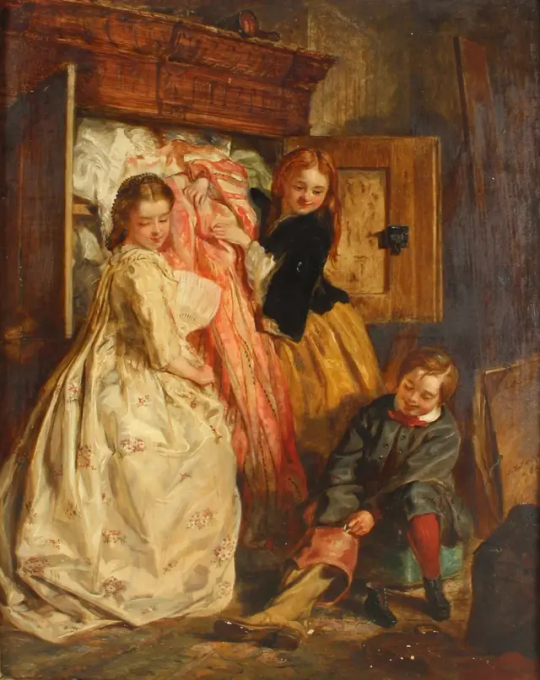
John Ballantyne (British, 1815 - 1897) - The Wardrobe Raiders
166 notes
·
View notes
Text

93 notes
·
View notes
Text

painting - calendar pin-up - circa 1955
Joyce Ballantyne
243 notes
·
View notes
Text


Ebonee Davis by Taylor Ballantyne
99 notes
·
View notes
Text

March - art by Joyce Ballantyne
#joyce ballantyne#vintage pin ups#march 1st#50s pinups#calendar girls#pinup art#pinup artist#spilled ink study#50s pinup girls#1950s
142 notes
·
View notes
Text
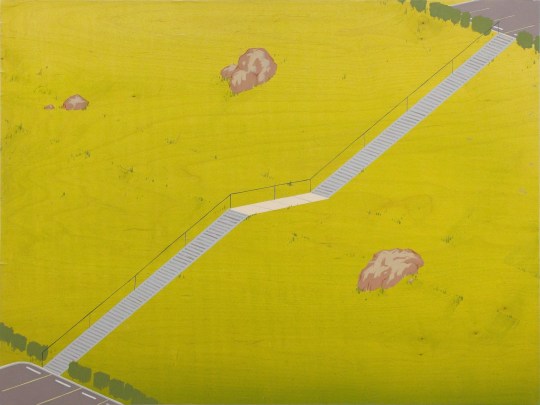
Chris Ballantyne (American, b. 1972), Stairway, 2018. Acrylic on panel, 27 x 36 in.
196 notes
·
View notes
Text
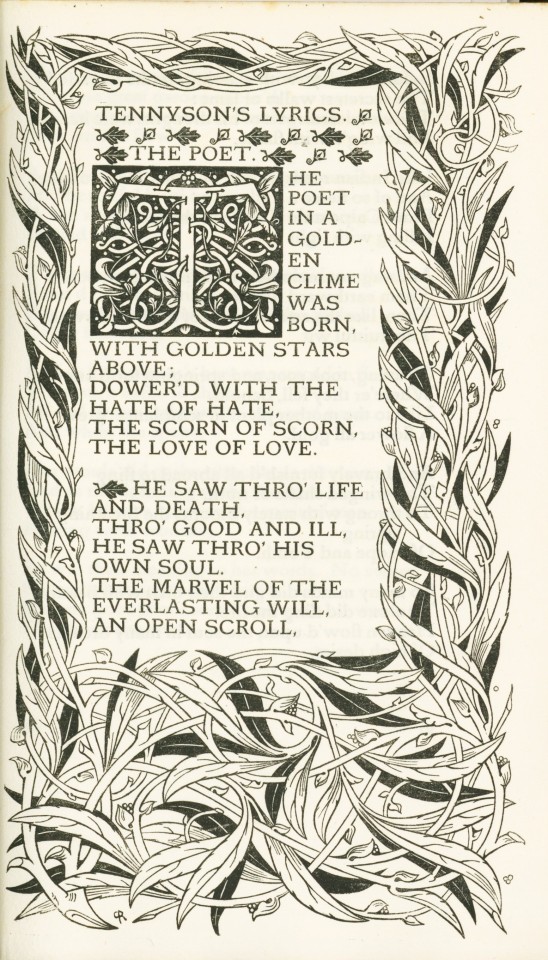
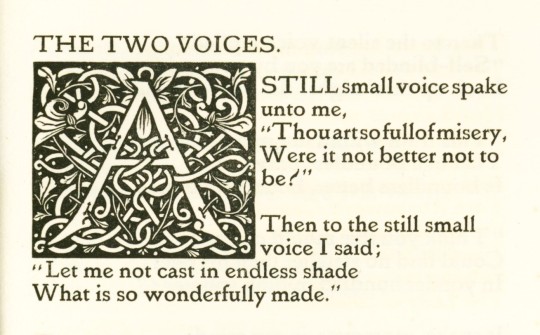
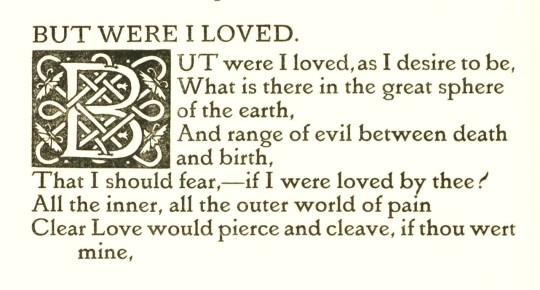


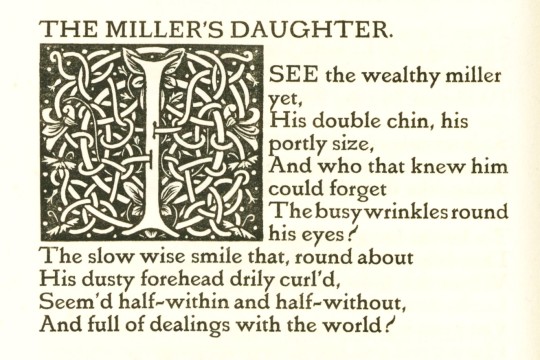


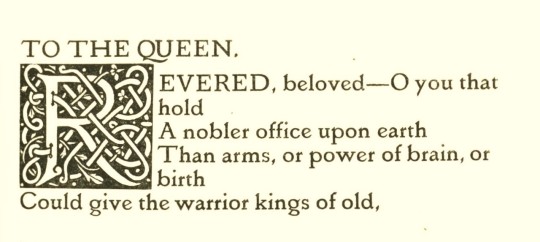

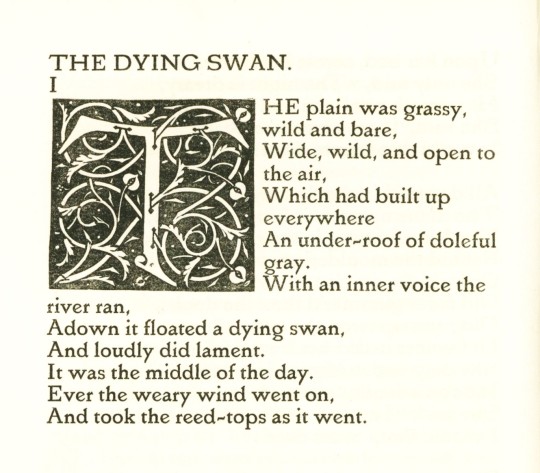


Typography Tuesday
This week we present some type and wood-engraved initials from an edition of Alfred Lord Tennyson's Lyric Poems by the Vale Press, printed in London at the Ballantyne Press in an edition of 320 copies in 1900. British artist, illustrator, printer, and book and type designer Charles Ricketts (1866-1931) founded the Vale Press in 1896 and designed three typefaces for the press. The most commonly used typeface was Vale Type, which is used here. Ricketts also used over 100 ornamental initials which he designed and engraved, several of which are shown here. To make the initials, Ricketts would draw the designs in ink, and then would paste a number of designs onto a single sheet. These were then photographed onto a woodblock, engraved by Ricketts, and finally separated when they were electrotyped.
The Art Nouveau-style border design in the first image was designed by Ricketts and engraved in wood by Charles Edward Keats, who began working for Ricketts in 1899. As Ricketts did not own the requisite printing equipment for his enterprise, he established a relationship with the venerable Edinburgh-founded Ballantyne Press, and this edition was printed by Charles John Holmes, who worked for Ballantyne and became the manager for Vale.
This copy of Lyric Poems is another gift from our friend Jerry Buff.

View more posts with work by Charles Ricketts and the Vale Press.
View more Typography Tuesday posts.
#Typography Tuesday#Typetuesday#Vale Type#ornamental initials#Vale Press#Charles Ricketts#Ballantyne Press#Alfred Lord Tennyson#Lyric Poems#Charles Edward Keats#wood engravers#wood engravings#Charles John Holmes#fine press books#fine press printing#Jerry Buff
103 notes
·
View notes
Text

UNTITLED (PONDS) (2003)
Chris Ballantyne
27 notes
·
View notes
Text

Joyce Ballantyne - "Gobs" - August 1955 Bowmans Automotive Advertising Calendar Illustration - Shaw-Barton Calendar Co. - American Pin-up Calendar Collection
#joyce ballantyne#august#1955#bowmans automotive#advertising#calendar#illustration#shaw barton calendar company#pin up#american pin up
296 notes
·
View notes
Text

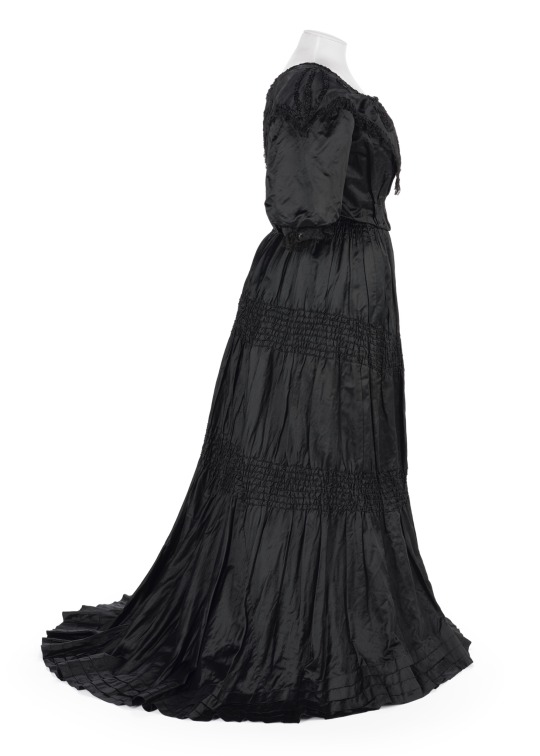
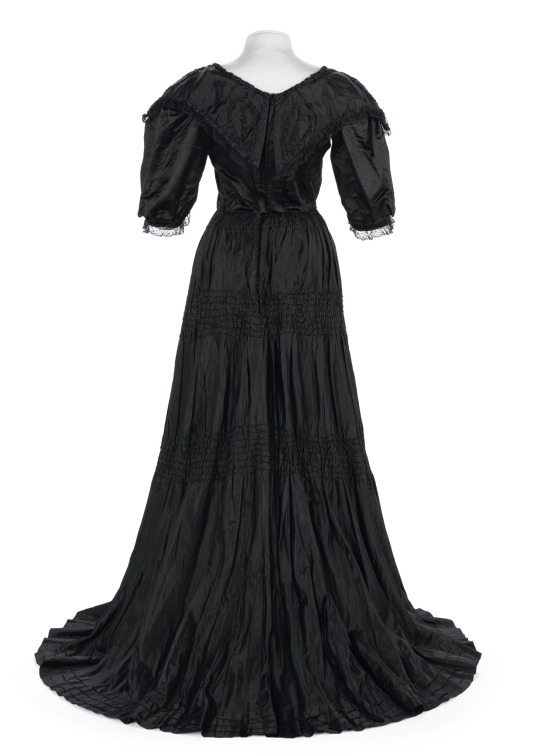
Black Silk Evening Gown, ca. 1895, New Zealand.
From J. Ballantyne & Co.
Museum of New Zealand.
#New Zealand#1890s New Zealand#museum of New Zealand#black#silk#evening dress#1890s evening dress#1890s evening#1890s dress#1890s extant garment#extant garments#womenswear#dress#19th century#j. ballantyne & co.#1890s
120 notes
·
View notes
Text

Edith Jane Ballantyne - Afternoon Tea (1878)
94 notes
·
View notes
Text

39 notes
·
View notes

